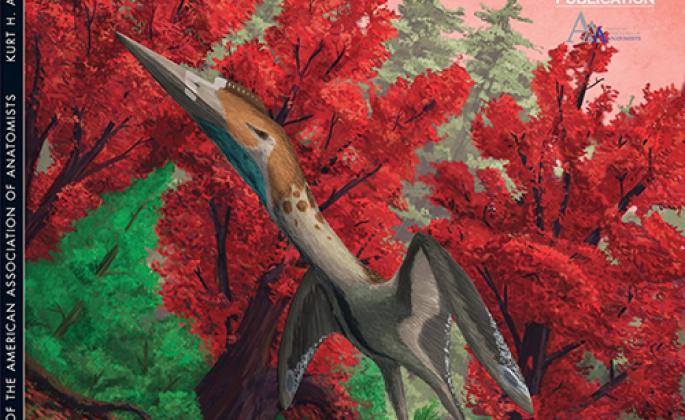Sonoma State University biology professor Nick Geist published his work on the lung structure and functioning of the flying reptile Pterosaurs in an article entitled "Breathing in a Box" in the journal Anatomical Record. The research was also recently profiled in Brian Switek's' National Geographic blog Phenomena.
Pterosaurs were the first vertebrates to achieve active flight, with some derived forms reaching enormous size, said Geist and his colleagues in the research summary.
"Accumulating fossil evidence confirms earlier indications that selection for large size in these flying forms resulted in a light, yet strong skeleton characterized by fusion of many bones of the trunk.
"However, this process also added mechanical constraints on the mobility of the thorax of large pterosaurs that likely limited the options available for lung ventilation."
Geist, et al, presented an alternative hypothesis to recent suggestions of an avian-like mechanism of costosternal pumping as the primary means of aspiration.
"An analysis of the joints among the vertebrae, ribs, sternum, and pectoral girdle of large pterosaurs indicates limited mobility of the ribcage and sternum," he wrote.
Comparisons with modes of lung ventilation in extant amniotes suggests that the stiffened thorax, coupled with mobile gastralia and prepubic bones, may be most consistent with an extracostal mechanism for lung ventilation in large pterodactyloids, perhaps similar to a crocodile-like visceral displacement system.
(Geist, N., Hillenius, W., Frey, E., Jones, T., Elgin, R. 2014. Breathing in a box: Constraints on lung ventilation in giant pterosaurs. The Anatomical Record. 297: 2233-2253. doi: 10.1002/ar.22839)
Commonly called "flying reptiles," pterosaurs were close cousins of dinosaurs and the first vertebrates to take to the air. They did so on wings of skin stretched between their bodies and extraordinarily-elongated fourth fingers. The first of their kind were relatively small, but, over time, their ranks swelled to include giants such as Quetzalcoatlus with wingspans over 33 feet across. And as with many outstanding extinct organisms, paleontologists are trying to puzzle together the biological basics of these animals. Among the major mysteries - how did big pterosaurs fill their lungs with air?

